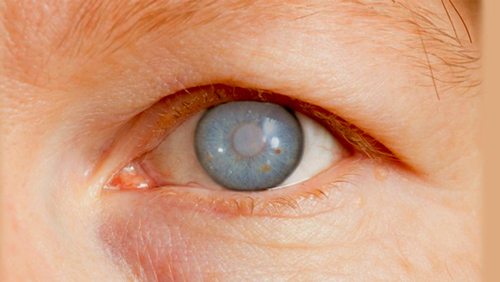BEST GLAUCOMA TREATMENT
IN PUNE
Glaucoma Treatment in Pune.
Visit Vision Next Foundation for the most advanced eye hospital Glaucoma Treatment in Pune
WHAT IS GLAUCOMA TREATMENT?
Glaucoma is a serious condition that involves an elevation in pressure inside the eye caused by a build-up of excess fluid. Always visit a glaucoma specialist rather than a general ophthalmologist.
Glaucoma, if left untreated, can destroy the optic nerve, which is the main nerve of the eye. In most cases, it is a painless disease, and there are no symptoms other than loss of vision, which can occur so gradually that many people do not realize it is happening. Unfortunately, it cannot be cured but it can be treated to minimize its damage to the vision. If it is spotted in its early stages, blindness can almost always be prevented. Visit our experienced glaucoma specialist at Vision Next Foundation.

WHAT ARE DIFFERENT TYPES OF GLAUCOMA?
Cataracts are a part of the ageing process, but even people in their 40s and 50s may develop early cataracts due to various reasons. While these may not affect eyesight immediately, they can progress into severe cataracts later in life. It's advisable to consult your doctor if you experience difficulties in seeing objects.
Different types of glaucoma:
Primary open-angle glaucoma
Primary open-angle glaucoma, also known as chronic glaucoma, is the most common type. Its effects occur slowly over time and do not cause any pain. The drainage of aqueous fluid from the eye does not happen as effectively as it should, leading to an increase in pressure.
Acute Angle Closure Glaucoma
Acute glaucoma is less common but more urgent. It occurs when there is a sudden and complete blockage of the drainage angle, resulting in a rapid increase in eye pressure. This happens when the edge of the iris and the front clear layer of the eyes (cornea) come into contact, stopping the fluid from draining through the drainage angle (trabecular meshwork).
Ocular hypertension
Ocular hypertension involves naturally high eye pressures above 21mmHg. This is not the same as having glaucoma. A diagnosis of ocular hypertension indicates high pressure without nerve damage. However, some patients with ocular hypertension can develop glaucoma; those at risk are treated instead of just being monitored.
Normal-tension Glaucoma
Normal-tension glaucoma indicates optic nerve damage with eye pressure within the normal range of 8-21mmHg. Treatment aims to reduce eye pressure and safeguard vision, similar to cases caused by high eye pressure.
Secondary Glaucoma
Increased eye pressure is caused by another eye condition(s), such as uveitis. Treatment focuses on reducing pressure and addressing the underlying cause to prevent vision damage.
Traumatic Glaucoma
Raised eye pressure results from injury or trauma, where damage to the drainage angle or the clogging of internal eye tissues or cells occurs.
Developmental/congenital Glaucoma
A rare type of glaucoma that affects young babies or children, usually caused by an eye or health condition.
Glaucoma – Symptoms
Symptoms can vary depending on the type of glaucoma
Open, Normal Tension, Secondary Glaucoma
• Your eyesight may feel normal to you.
• Gradual peripheral vision deterioration.
• Tunnel vision, where glaucoma results in a loss of peripheral vision, with central vision unaffected.
• No pain.
Closed-angle glaucoma.
• White or coloured halos around lights.
• Red eyes.
• Blurred vision.
• Headache.
• Tenderness around the eyes.
• Nausea or vomiting.
• Mild attacks (often in the evening) may cause “misty” vision with halos and eye discomfort.
Attacks can occur in one or both eyes, but it is rare for both eyes to have an attack simultaneously. Acute glaucoma is an emergency and requires prompt treatment to preserve sight.
Congenital/Developmental Glaucoma
• Unusually large eyes.
• Excessive watering of the eyes.
• Cloudy or hazy eyes.
• Light sensitivity.
FACTS ABOUT GLAUCOMA
- Glaucoma is chronic, progressive, and often asymptomatic. According to the World Health Organization, glaucoma is the second-leading cause of blindness In the United States and the world.
- The most common form of glaucoma is open-angle glaucoma, which accounts for an estimated 95% of all glaucoma cases.
- Globally, glaucoma affects 605 million individuals.
- Glaucoma is 6 to eight times more common in African Americans than in Caucasians.
- Due to the growing ageing population, it is estimated that glaucoma may affect 80 million individuals by 2020.
- If undetected and untreated, glaucoma can cause Irreversible damage to the optic nerve and blindness.
Treatments for Glaucoma.
- Glaucoma cannot be cured, but can be maintained through:
- Laser Therapy
- 90% of glaucoma patients are candidates
- Medication (usually in the form of eye drops)
- Selective Laser Trabeculoplasty (SLT)
- Filtration Surgery
Diagnosis plays a significant role in treating Glaucoma. Visit Best Glaucoma specialist in Pune at Vision Next Foundation.


